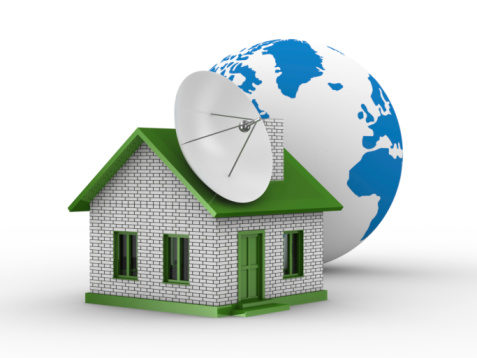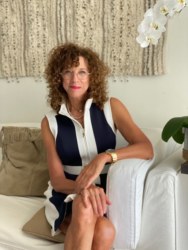Local publicity sells, and now more than ever, it is extremely important to effectively market yourself and your products to local media. Building relationships with media in your region can help turn you into a local “media darling,” someone journalists can count on and consumers love.
Local publicity sells, and now more than ever, it is extremely important to effectively market yourself and your products to local media. Building relationships with media in your region can help turn you into a local “media darling,” someone journalists can count on and consumers love. Becoming a media darling will result in increased brand awareness, but becoming a local media darling means a better bottom line for your business.
As a retailer and local business operator, you are already paying attention to your local politics, news, sports, tourism, consumer affairs, businesses and campuses, and so are people in your community. People are still reading their local newspapers. In fact, not only are they reading articles about products—they are clipping them, saving them and referring to them at the retail counter. If your products, services or expertise are featured in a local newspaper, you can easily expect an increase in sales.
As a PR-savvy retailer, you should strive to be a part of your community and engage with your potential customers. By sponsoring, hosting and promoting events, providing giveaways, and building relationships with news personalities, including newspaper reporters, weekly magazines, city guide writers and morning radio DJs, as well as the tourism bureau, chamber of commerce, universities and corporations, you will be considered an integral member of the community, and you will further establish your business’s place as a valuable venue.
You can use several PR tactics to earn the trust of local residents and keep your business on their radar screens. Speaking with other retailers or business owners who are well-known in their communities is a great way to learn more about boosting your local profile.
Sometimes, you will find that generating a local buzz is as easy as capitalizing on national buzz. Trends start nationally and trickle down regionally, so it is important to pay attention to what is going on at the national level. According to father and son team, Bernie and Noah Bubman, owners of The Earth Bar in Los Angeles, CA, “When something is hot on the national level, you start to see it on the local level. For example, vitamin D is in every health section of every magazine. When a supplement is hot, it saturates those media outlets and people come in because they heard about it. When our vendors get us on blogs and newspapers that are unique to L.A., our products sell. We have relationships with journalists who come in to the store and ask us what’s new. They are out there to cover a story and we’ll tell them
|
Becoming a PR-Savvy Retailer Here are some ways to mobilize your vendors to garner PR in your region:• Demos: Work with manufacturers to host demos, sessions or events around their products. Use your in-house experts or invite manufacturer’s trainers to speak. Events like these will turn your facility into a source for media activity. • Reprints: When a product you sell is featured in a magazine, display the article at point of purchase or in a place where customers can see it. If the article is national, distribute it to local press to let them know this national trend is now available locally for their readers. • Experts: Offer your staff as local experts on products for media opportunities. • Co-promotions: Develop programs with product manufacturers to garner local and national media for your product. |
what’s going on, which products are selling.”
Retailers can also adapt their vendors’ national campaigns on a regional level. For example, Earth Friendly Products launched its “Safeguard Your Home!” online campaign, a nationwide program to encourage consumers to rid their homes of toxic household cleaners. The company encourages its retailers to extend the campaign to the store level by reaching out to media and influentials within each retail community.
For Jene Arnold, owner of Malibu Vitamin Barn, the key to local success is community building. “Strong identity and community are essentials. Our brand is built on reputation, location and popularity. People are looking for places where they can meet, and we offer that. We create a friendly and open environment where our customers feel invited to stay and mix. We also host health fairs outside our store, which is a huge hit with everyone in the community. Locals love the fairs and they love to meet the people behind the products. It builds community. If you want to successfully launch a product at our store, you need to participate.”
When it comes to Whole Foods stores, the consensus is that demos and sampling are the best ways to drive local traffic and press—even if it is a product representative sampling in the aisle. According to Shawna Lovejoy, team leader of Whole Body Department of Whole Foods, at Tenaya, Las Vegas, “People want to know more. They are always asking questions about healthy products. Every time a health issue is in the news—we see customers looking for natural and preventive approaches based on media coverage. Many Whole Foods stores offer an opportunity to expose our customer to the same education provided to our sales staff, and our vendors are encouraged to educate our customers. Promoting those educational seminars and demos on TV shows and local drive time and lunch time radio shows are very effective.”
Brendan Brazier, formulator of Vega, a plant-based line of packaged whole food products, routinely visits Whole Foods Markets and health food stores internationally where his product is carried, in an effort to make the buyers’ and sellers’ experience with Vega more interactive. As a professional Ironman triathlete and the best-selling author of diet and fitness bible Thrive (Penguin/Da Capo) and the upcoming Thrive Fitness (Penguin/Da Capo), Brendan is able to leverage his platform in the health and fitness arenas and raise awareness of Vega and the healthy lifestyle he advocates. “Chances are, people who shop at Whole Foods and health food stores are doing some kind of exercise, or are looking for information on how to stay healthier,” he explains. “Making my brand multi-faceted keeps me in front of the consumer,” he adds.
As a business owner, it is also beneficial to make you and your brand available to media outlets in retail markets. Stephen Richards, chef, author of the cookbook Delicious Meets Nutritious and the creator of Xagave, a premium blend of agave nectar, flies out to local markets where his product retails to do seasonal cooking segments on local TV morning shows. He also attends events and tradeshows across the country. He prepares sugar-free meals on air, hosts tastings with the news anchors and then directs viewers to his local retailers so that they may buy the ingredients and cookbook.
Take advantage of new products and programs being introduced. Take note of trends that may be developing within your store. WF
Nancy Trent is the founder and president of Trent & Company (www.trentandcompany.com), a global marketing communications firm. A former journalist for New York magazine and seasoned PR veteran, Nancy’s firm specializes in developing innovative and effective awareness-building campaigns for companies that are ready to take their businesses to the next level. She is the author of seven books, serves on the editorial boards of influential trade publications, and regularly speaks at major conferences and tradeshows around the world. Nancy can be reached at (212) 966-0024 or at nancy@trentandcompany.com.
Published in WholeFoods Magazine, January 2010










